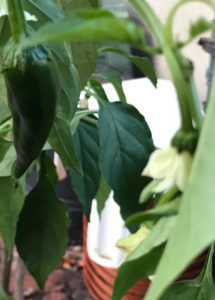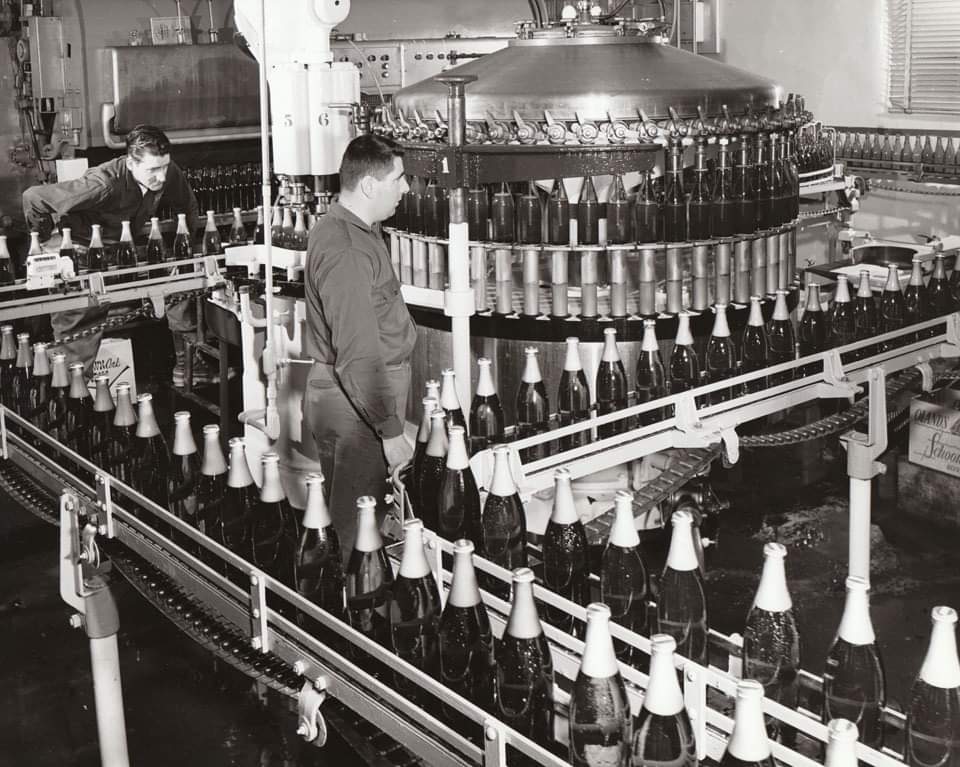 I did mention that I like March, right? Almost met my maker on Saturday shovelling wet snow. Boo-hoo, you say! It’s your own damn fault for being Canadian, you shout!! I get it. I get it. But it is March and while the sun’s heat melts the alpine peaks created on the weekend by the driveway, seedlings are getting ahead of themselves in one corner of the basement under funny looking lights. Those courgettes are pushing it, frankly. Who knew they’d take to subterranian living so well? The endive is looking OK. Taking its time. That stuff at the bottom? Dead by Saturday. Waaaay too leggy.
I did mention that I like March, right? Almost met my maker on Saturday shovelling wet snow. Boo-hoo, you say! It’s your own damn fault for being Canadian, you shout!! I get it. I get it. But it is March and while the sun’s heat melts the alpine peaks created on the weekend by the driveway, seedlings are getting ahead of themselves in one corner of the basement under funny looking lights. Those courgettes are pushing it, frankly. Who knew they’d take to subterranian living so well? The endive is looking OK. Taking its time. That stuff at the bottom? Dead by Saturday. Waaaay too leggy.
Hmm… yet to mention beer related things again… must still smarting from getting absolitely owned by TBN over at Twitter on a question of the royals… I had no idea I was dealing with a crypto-monarchist… acht weel… First up, Katie Mather wrote a wonderful goodbye for Pellicle about a well loved spot that has shut:
The Moorcock has been more than a pub to me in the small years it was open—for yes, sadly, it has closed. There is no way in high heaven that The Moorcock could have ever been called my local. I’m not as lucky as that. Stood on top of a hill above Sowerby Bridge, this pub is more than two hours of a trip either way from my home in the Ribble Valley. It is far away enough to merit a whole weekend break to be structured around eating there. Or, it was. I keep forgetting.
And Ed also wrote about something a bit sad and also a bit too common these days, the closing of a small brewery or a pub. The twist in Ed’s case is that the brewery was his former employer:
The news that the Old Dairy Brewery had gone bust didn’t come as a huge surprise to those of us that knew the company. It didn’t mean it wasn’t sad though. I spent a few years working for the company. I learnt a lot there, met some great people and had some good times. I also met some right arseholes and had some bad times, but such is life.
Finding a moment from his own daily postings, Martin shared an interesting comment under Ed’s thoughts on some of the particular problems this place faced: “I was also told that those old Nissen huts weren’t particularly suited to house a brewery – freezing cold in winter, and baking hot in summer.”
Perhaps oddly in this economic climate, Ontario’s oldest micro has been bought by a macro – and for a pretty good price:
The province’s OG craft brewery has reached new heights with exciting news of its acquisition by a gigantic beer giant. Little ole Waterloo Brewing has officially been acquired by Carlsberg Canada (a subsidiary of The Carlsberg Group) as of March, 7. The gigantic business deal is estimated to be in tens of millions of dollars, with CTV News putting it at a whopping $217 million in cash. Known for its creative Radler and IPA flavours (guava lime, tart cherry and original grapefruit), classic lagers, and cute boar icon, Waterloo was first established in 1984 as Brick Brewing.
Note: calling a brewery “craft” in 1984 is like calling Canada’s temperance era prohibition.* Not sure what the attraction is, given the trends noted last week right about here. A facility for brewing more Carlsberg?
Elsewhere, things are still happening and mixing was a bit of a theme this week. Jeff discussed the blending old and young ales while Matt shared some thoughts about wine and beer co-existing. In each case, the point is creating something new out of complimentary qualitities… like this:
…the chalk seam that runs beneath Westwell’s vineyard is the same one that travels all the way to the Champagne region of France, this terroir giving the grapes a similar – if not identical – quality to those cultivated in the storied wine region. This imbued the beer with the rich, spritzy and dry quality of the famous sparkling wine that, when buoyed with the acidic tang of the Beak saison, and the crunchy, bone dry character of the beer from Burning Sky, created a beverage that was somehow even more delicious than the sum of it parts.
Compare force of attraction that the bit of a push that Jeff describes:
Nationwide, there’s an overcapacity of barrel-aged beer of all types. Breweries invested in barrel rooms because, for a time, beer geeks were paying a lot of money for bottles of the stuff (both wild ales and barrel-aged beer). That has changed, and while people still pay a premium for aged beer, it doesn’t move like it used to …
At least the barrel cellars feel the same pain that the thousands of beer stashes have. Just too much of that stuff. Much too much.
And Australia’s website The Crafty Pint published an interesting article on Cherry Murphy, beer and spirits buyer for Blackhearts & Sparrows, drinks retailer:
…the role of beer buyer is something she’s done for close to five years. In that time, the number of breweries has grown significantly. But, while there’s more beer to work through and more options to stock, Cherry says there’s a fundamental they always return to: whether it’s a bottle of lambic, a tall can of hazy IPA, or their own Birra (brewed with Burnley Brewing), their focus is on what tastes good and ensuring their stores can suit many tastes. “We do always say we’re a broad church,” she says, “so we don’t want to alienate anyone or be snobby because good beer is for everyone. Sometimes a good beer is a cheap beer and sometimes it’s expensive, but as long as it’s a good product I’ll range it.
And also Beth Demmon has posted an excellent sketch of cider seller, Olivia Maki of Oakland, CA over at Prohibitchin’:
There aren’t very many cider-centric bars or bottle shops in the United States: I’d guess there are fewer than a dozen. They’re not even an endangered species—more like an ultra-niche novelty that I would really like to see become more popular. Through Redfield, Olivia is doing her damndest to transform cider’s novelty into the mainstream. She laughs when she remembers the initial idea to open a cider bar and bottle shop. “The world didn’t need another beer spot,” she says. But selling the concept to landlords proved difficult. “None of them knew what cider was!”
Keep an eye out for Beth’s soon to be released cider guide. Then Katie Thornton interviewed Adrienne Heslin who, in 2008, opened the first female-owned Irish brewery for the website Love Dublin this week:
I was born in the 60s and you can imagine it’s not plain sailing. Coming to brewing, I actually found the opposite because it’s such a small industry. When I started I was introduced very quickly to the bigger micro-breweries and to my amazement they were just nothing but cooperative. A down-side on the female end of things – it’s amazing, you give a man a job, and suddenly everybody think he’s in charge, so I find that a lot. In particular, I have a gentleman now who’s wonderful and in charge of production, but they refer to him as the brewer, whereas he came in as an intern. I taught him everything.
I remember the same thing happening in my mother’s shop when my father, the reverend, would be there. He quite forcefully would admit his ignorance on all subjects, directing folk back to the one in charge.
When he wasn’t rearranging royal wedding memorobilia, The Beer Nut encountered that strange creature, an “eighty shilling shilling“:
It’s about the same strength as the previous beer and is an unattractive murky muddy brown. The flavour is mercifully clean, but not very interesting. One expects hops from a pale ale and malt from a Scottish-style amber-coloured ale, and this shows little of either. There’s brown sugar and black tea, finishing up so speedily as to resemble a lager. I suppose one could be happy that there’s no “scotch ale” gimmickry or cloying toffee, but I thought it came down too far on the other side, being boring and characterless.
That’s what’s been said about me. Mercifully clean. Not very interesting. And, finally, David Jesudason wrote a very interesting piece – this time for for GBH (regrettably accompanied by distracting retro java script looping weirdness) – about the history of the British curry house and the curry district and the bigotry those who worked there had to put up with:
Curry quarters like these sprang up first as community spaces for South Asians to carve out support networks and enjoy familiar food together. But to make their businesses viable from the 1960s onwards, restaurant owners had to cater to the wider population. This is where many first- and second-generation workers faced racism head on—serving white people “while absorbing their shit at the same time,” says dancer Akram Khan about his curry-house upbringing. It was common for waiters to be mocked for their accents, or to face abuse over the prices they charged.
Keep an eye out for David’s also soon to be released book, Desi Pubs. There. We have concluded our broadcast for the week. Next week? The winter that was. Now the acknowledgements. Consider Mastodon. Here’s your newbie cheat sheet:
Stan Hieronymus | The Man!
Boak & Bailey | The B² experience
Katie Mather | Shiny Biscuit and Corto
David Jesudason | “Desi Pubs” (2023) author
Ron Pattinson | The RonAlongAThon Himself
Al Reece AKA Velky Al | Fuggled
Jennifer Jordan | US hops historian
Alan McLeod | A Good Beer Blog (… me…)
Andreas Krennmair | Vienna beer and lager historian
Beer Ladies Podcast | Lisa Grimm and colleagues
Jay Brooks | Brookston Beer Bulletin
Joe Stange | Belgian beer expert, beer magazine editor
Cider Bar | Barry makes Kertelreiter cider
Laura Hadland | CAMRA historian and beer writer
Brian Alberts | US beer historian
Jon Abernathy | The Beer Site
Maureen Ogle | US Beer Historian
Lars Garshol | Norwegian Beer Historian and Kveik Hunter
James Beeson | Beeson on Beer
Carla Jean | MAINER!!!
Thandi Guilherme | Beer Ladies Podcast Co-host
Lisa Grimm | Beer Ladies Podcast Co-host
Rob Talksbeer | Podcaster and Youtuber
Anthony Gladman | UK Drinks Writer
Jeff Alworth | Manna Of Beervana
Northwest Beer Guide | Fairly self explanatory… but not NW Latvia…
Evan Rail | Prague based GBH editor, freelance writer, NYT etc.
Todd Alström | 50% of the Alströms
Jacob Berg | Beer talking librarian
And check the blogs, podcasts and newsletters including more weekly recommendations from Boak and Bailey every Saturday and maybe from Stan at his spot on those Mondays but, you know, he writes when when he can. Do sign up for Katie’s wonderful newsletter, The Gulp, too. And check out the Atlantic Canada Beer Blog‘s weekly roundup. There is new reading at The Glass. Any more? Yes! Check to see the highly recommended Beer Ladies Podcast. And the long standing Beervana podcast . There is the Boys Are From Märzen podcast too and check out the travel vids at Ontario’s own A Quick Beer. There is more from DaftAboutCraft‘s podcast, too. Still gearing up, the recently revived All About Beer has introduced a podcast, too even if it’s a bit trade. There’s also The Perfect Pour. Plus follow the venerable Full Pint podcast. And the Craft Beer Channel this week on Youtube. And remember BeerEdge, too, and The Moon Under Water if you have $10 a month for this sort of thing… I don’t. Pete Brown’s costs a fifth of that. There was also the Beer O’clock Show but that was gone after a ten year run but returned renewed and here is the link!**
*Winky Face Emoticon!!!
**I’ve reoganized to note the departed newsletters and podcasts or those in purgatory. Looks like both Brewsround and Cabin Fever died in 2020, . We appreciate that the OCBG Podcast is on a very quiet schedule these days – but it’s been there now and again. The Fizz died in 2019. Ben has had his own podcast, Beer and Badword (Ed.: …notice of revival of which has been given… still not on the radio dial…) Plus Fermentation Radio with Emma Inch seems done and the AfroBeerChick podcast is gone as well! The Fingers Podcast packed it in citing, umm, lack of success… as might have been anticipated, honestly. Did they suffer a common fate? Who knows?




 So… me and we are back from holiday. And I’ve been away and back on the road for work already. Before the before I was roadlying it a lot but the big project is in the final strokes and, happily, it seems all turned out fabulously. To the extent I understand. We are well past the gravel, moved on from the concrete and are thinking asphalt. School starts next week, too. Just a few first days of school left in this family. Days are being squeezed by the junior ranks. I am looking forward to the big holiday one day, a life with days like
So… me and we are back from holiday. And I’ve been away and back on the road for work already. Before the before I was roadlying it a lot but the big project is in the final strokes and, happily, it seems all turned out fabulously. To the extent I understand. We are well past the gravel, moved on from the concrete and are thinking asphalt. School starts next week, too. Just a few first days of school left in this family. Days are being squeezed by the junior ranks. I am looking forward to the big holiday one day, a life with days like 











